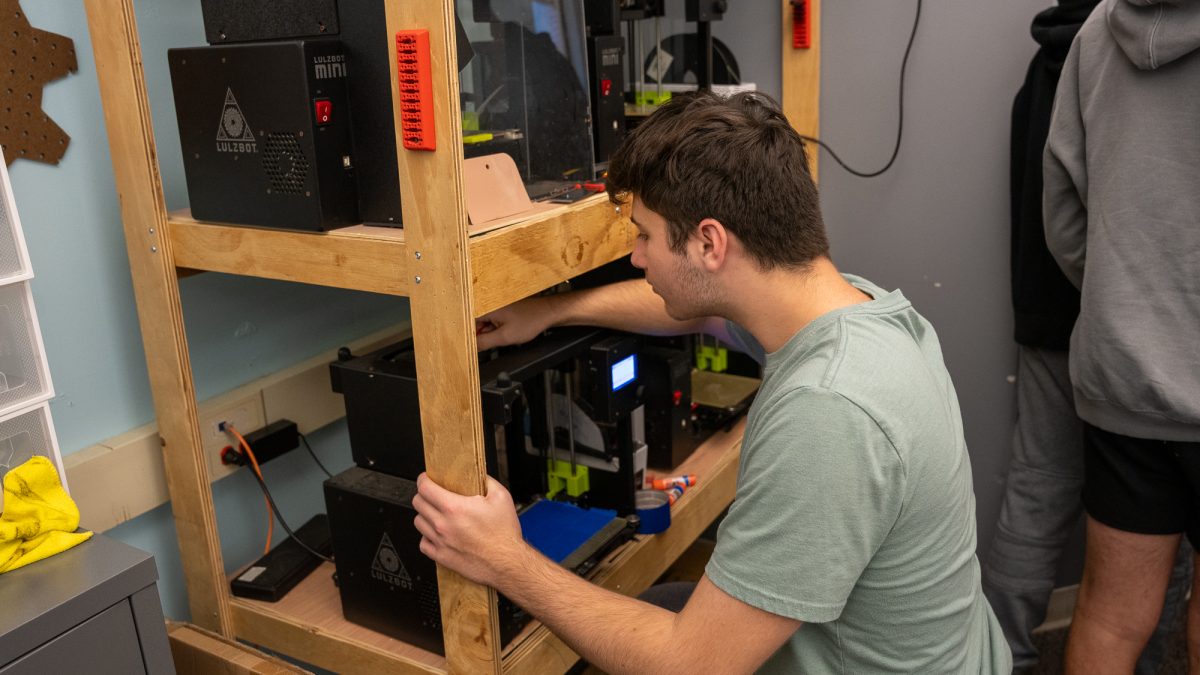In Mr. Banks’ Honors Engineering Design and Development course, students spend all year creating solutions to daily problems.
“The course is all about identifying a problem, making sure that it is valid, and creating a solution that does not violate any copyrights or patents,” Banks explained. “Can we make a cheaper, more efficient solution to our problem?”
Two examples of student projects from recent years in Banks’ class are a device that aids fishermen in threading the eyes of small fishing hooks and a plasma-cut attachment to snow shovels that allows the tool to shatter ice with ease.
In order to solve the problems they identify, students use a variety of workstations and skillsets to produce a solution that fits their needs.
“Kids use 3D printing, laser cutting, and traditional woodworking in order to take their hypothesis into inventions,” Banks said. “The most important part is making sure that the invention or solution actually makes things better.”
The juniors and seniors in Honors Engineering Design and Development spend the first nine weeks in groups from two to six, brainstorming a problem that requires a working solution. Along with the practical skills of fabrication, students also strengthen their bonds with each other through the hard work of identifying real-world problems.
“What we’re learning in class right now is how to work as a team,” NASH senior Axel Standish said. “At the beginning of the year, we learned the steps required to bring product ideas to reality. Another big topic we’ve been focusing on is how to work with our partners towards a common goal.”
Now that the first quarter has passed, Banks’ groups will soon be dedicating themselves to producing a working prototype.
“My group is still in a brainstorming phase for our project, but we’ve thought of some ideas so far,” Standish said. “For instance, isn’t it annoying how water bottles seem to just leak sometimes? Or don’t you hate when you microwave food and it’s still really cold inside but scalding on the outside?”
A common issue in Banks’ course is that students struggle with originality, sometimes discovering halfway through a project that a similar product has already been produced and patented.
“There have been times when kids get all the way to February and then find a product on Amazon that just came out that has the exact same function as the invention they wanted to make,” Banks said. “It’s called parallel thinking.”
One example is a group of students who made an adapter for AAA batteries to fit in the same slot as AA batteries.
“Around March, one of the kids looked on Amazon and saw a brand new product with the exact same function as what they had brainstormed, tested, and had already made a working prototype of,” Banks said.
But the purpose of the course is to forge ahead despite temporary failures. For Standish, setbacks are necessary steps in the creative process, and the Honors Engineering Design and Development curriculum is built on that foundation.
“It’s annoying initially, but errors give you a new perspective on your whole approach to an idea,” he said. “And maybe you come up with an even better idea afterwards.”



